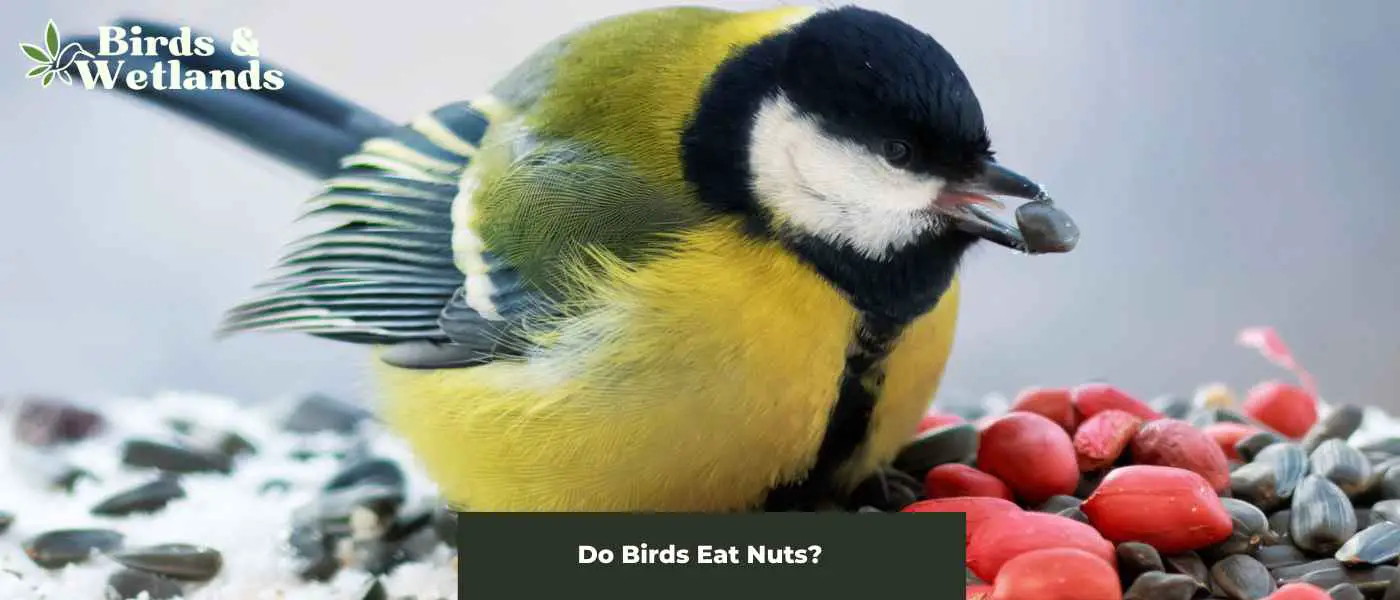Nuts are an important part of a healthy diet for humans and birds. They are high in protein, healthy fats, vitamins, and minerals essential for overall health. For birds, nuts provide the energy and nutrients they need to survive the harsh winter months.
Many species of birds, especially those that migrate for the winter, rely heavily on nuts as a food source. Wrens, blue jays, and woodpeckers are a few birds that thrive on nuts during the fall and winter.
We explore the role of nuts in birds’ diets and how they can be a beneficial food source for many species. Whether you are a bird lover or simply interested in nature, we encourage you to read and learn more about the fascinating relationship between birds and nuts.
Key Takeaways on Birds & Nuts
Are nuts good for birds?
Whole nuts are classified as hard mast while a fruit is considered a soft mast.
Nuts are a popular food source for many birds, especially during the winter months. One of the main nutritional benefits of nuts is their high-fat content, which is crucial for winter birds who need a high-fat diet to survive the cold weather.
During the winter, birds need to store energy to help them maintain their body temperature and keep their feathers healthy, so a diet high in fats and oils is essential. This high-fat content provides a source of energy that the birds can draw on when they need it most, helping to keep them warm and active throughout the winter.
Nuts are also an excellent source of protein for birds. Protein is essential for the growth, maintenance, and repair of tissues and for the production of enzymes and hormones.
When birds consume nuts high in protein, they can build and maintain strong, healthy bodies, which is especially important during the winter months when they need to be in top condition to survive the cold weather.

Can birds eat walnuts?
Walnuts can provide an enriching and nutrient-dense food source for certain birds. While not all species of birds can crack walnut shells, many thrive on this nutritious food. Chickadees, woodpeckers, crows and jays often enjoy adding walnuts to their diet.
If you plan to scatter or hang small pieces of unsalted nuts within bird feeders in your yard, break the shells into smaller bits to increase accessibility.
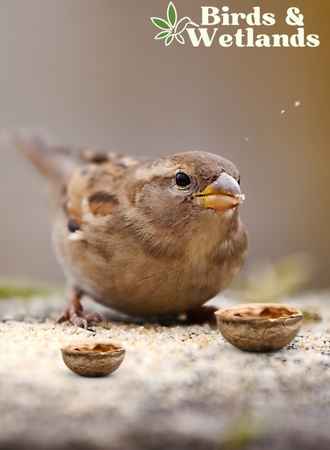
Can birds eat pine nuts?
Pine nuts are edible seeds from certain pine trees. They are not harvested on a large scale like other seeds and nuts due to labor-intensive harvesting by hand. But they remain a popular ingredient in many kitchens across the globe due to their robust flavor.
Interestingly, birds can eat pine nuts too – in particular, nutcrackers, parrots and macaws and crossbills who feed on them from the cones of pine trees.
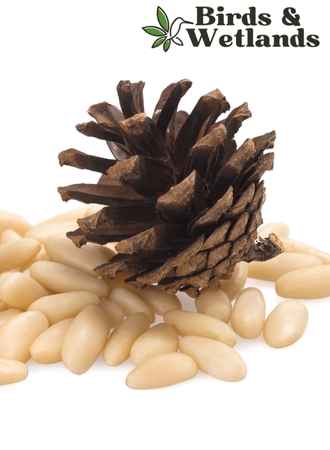
Can wild birds eat macadamia nuts?
Macadamia nuts offer a wealth of nutrition for our feathered friends, packed with beneficial fats, protein, and fiber.
However, it is important to be cautious when offering these nuts to birds. Their hard shells can be difficult to crack open for some species.
To keep your birds safe, opt for unsalted and uncoated macadamias and remove the shells for smaller birds to avoid choking or blockage.
With the right preparation and careful feeding, macadamias can provide important nutrients for the well-being of our avian companions.
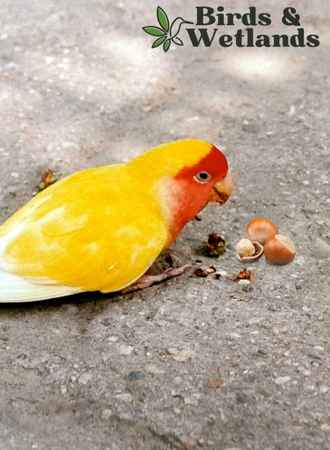
What other nuts do birds like?
Nuts are a favorite food of most birds in North America. Birds such as wild turkeys, wood ducks and blue jays particularly love peanuts and hickory nuts for their full-bodied flavor.
Other popular nut varieties among feathered friends include almonds, hazelnuts, sunflower seeds, Brazil nuts and chestnuts.
Birders frequently leave peanuts and other bird food out in birdfeeders or on the ground to attract more avian visitors to their yards.

Can birds eat old nuts?
If you’re in a rush and don’t have the time to pick up bird feed for the neighborhood wildlife, why not see if you can entice them with some old nuts you have lying around?
While it’s probably a better idea to provide fresh nuts for your feathered friends, it never hurts to see if they’ll take something past its expiration. Maybe they’re feeling a bit adventurous and want a change from ordinary birdseed!
Also, bonus points: you’ve cleared out some space in your pantry while doing good by the birds. Win-win!
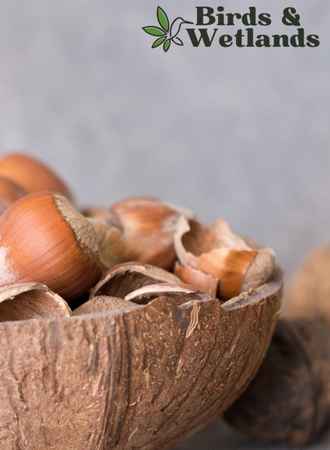
Do birds crack nuts open before eating them?
Birds possess remarkable intelligence and problem-solving skills, and how they consume their food is an excellent example of this. Some bird species can crack open seeds and nuts before eating them. This behavior is not limited to any specific family of birds, and many birds from different taxonomic groups are known to engage in this activity.
Birds that consume nuts and seeds as part of their diet have specialized beaks that help them crack the hard outer shell and access the nutritious kernel inside.
Similarly, the crow’s beak is also robust enough to crack open seeds and nuts. It is common to see these birds picking up acorns and walnuts from the ground and holding them in their feet while they crack the shells open with their beaks.
Some birds, such as nuthatches, woodpeckers, crows, jays and chickadees, store nuts and seeds for later use. They have been observed to cache food items in various locations, such as under tree bark or crevices in rocks.
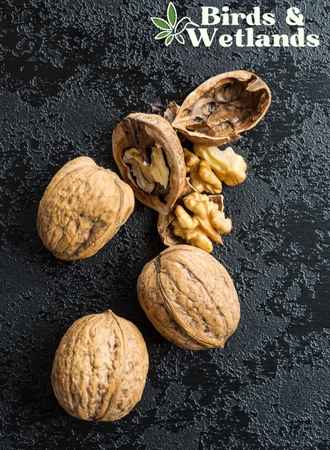
What are some of the most popular birds that eat nuts?
- American Robin
- Red-breasted Nuthatch
- Downy Woodpecker
- Northern Flicker
- Carolina Wren
- Blue Jay
- American Crow
- Black-capped Chickadee
- Red-headed Woodpecker
- White-breasted Nuthatch
- Pileated Woodpecker
- Long-tailed Tit
How to use nuts to attract backyard birds to your garden
- You can throw in a few nuts on the ground in your garden to attract backyard birds.
- Offer birds and small animals raw nuts, never salted ones.
- Nuts are produced by deciduous trees and shrubs such as the American beech, so plant some in your backyard. If you decide to plant new trees, choose native plants. You can shake nut-producing trees and watch ripe nuts fall into the ground.
- Birds also love to eat nut butters. You can smear tree trunks or posts with it to attract birds.
- Many animals and different species of birds visit feeders in the colder months and you can help them by leaving natural foods such as different nuts, nut pieces, berries, dried insects, fruits and other food sources.
- You can also plant peanuts in your garden which grow underground to provide even more food for your avian friends.

